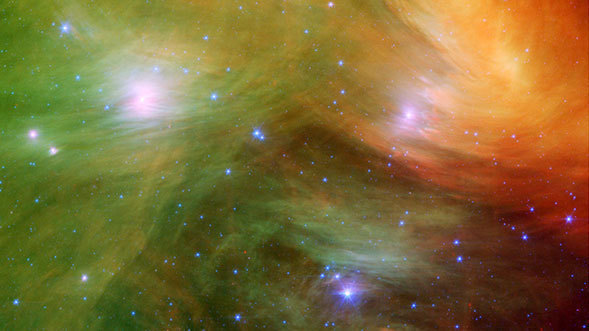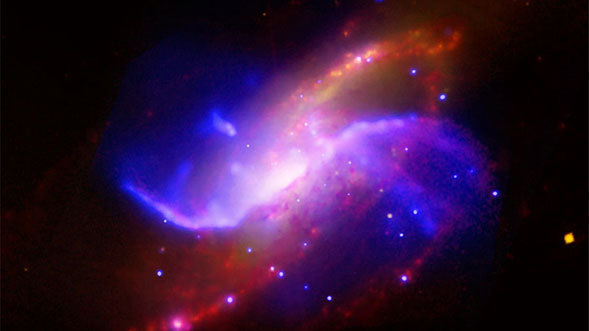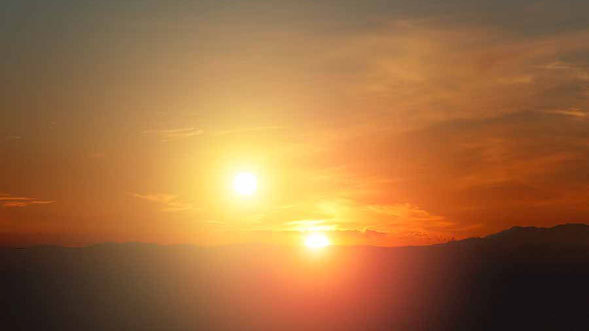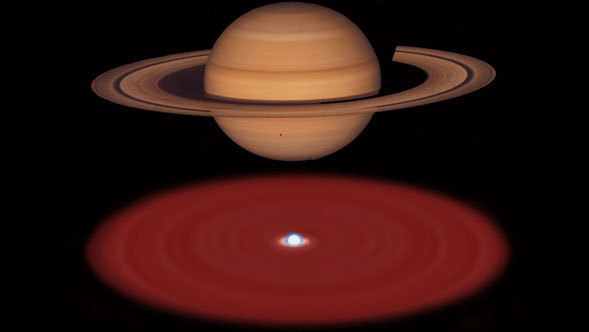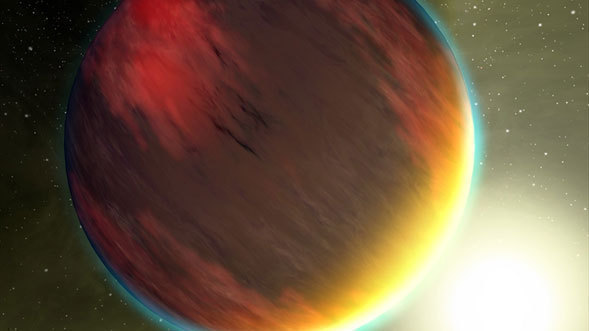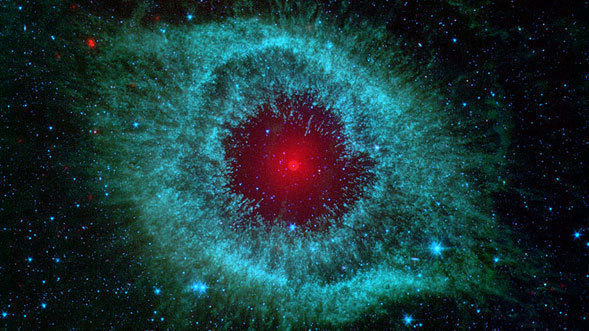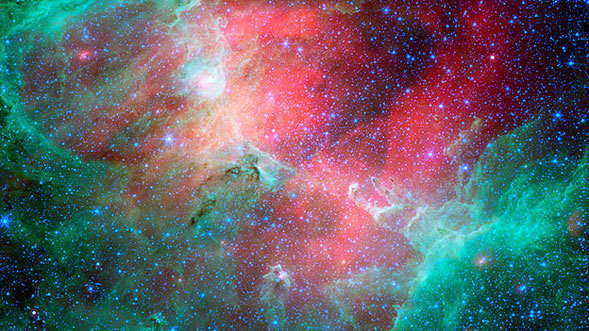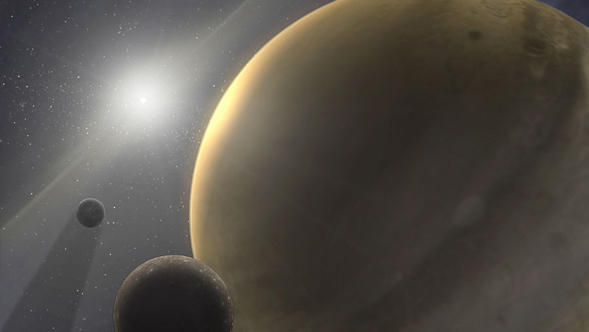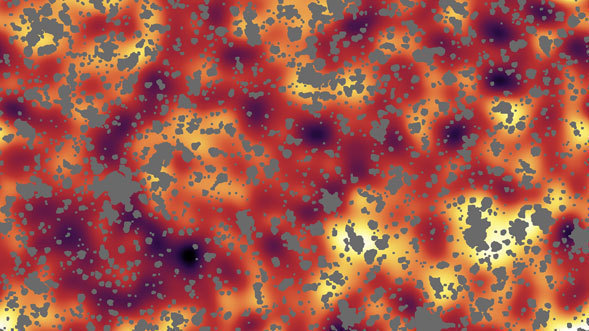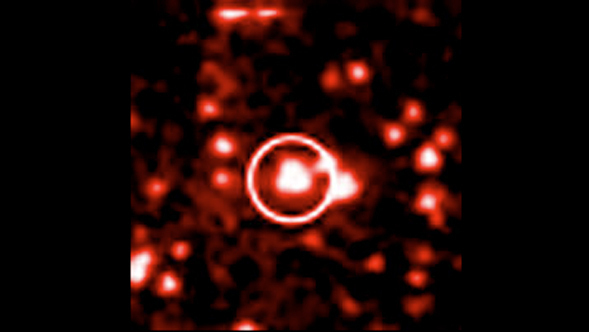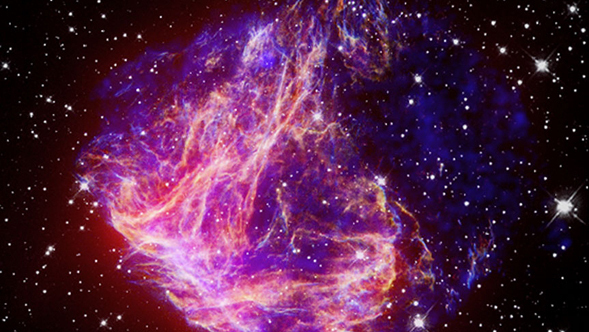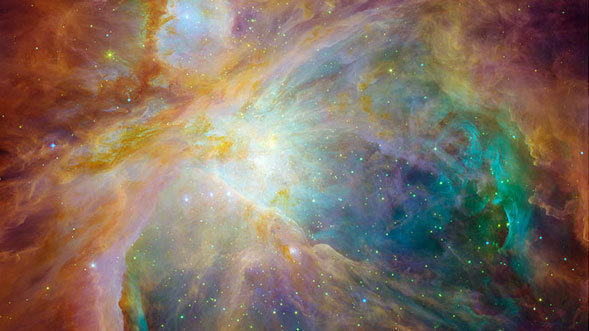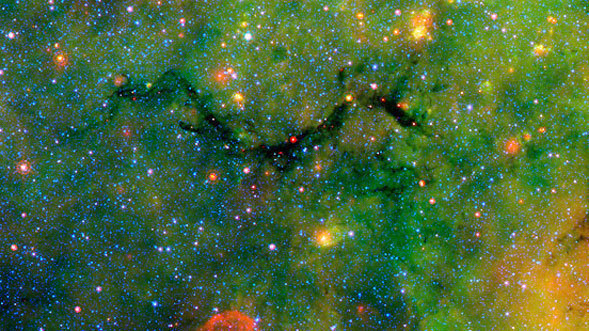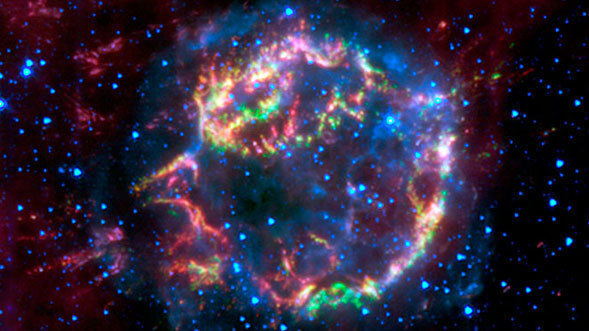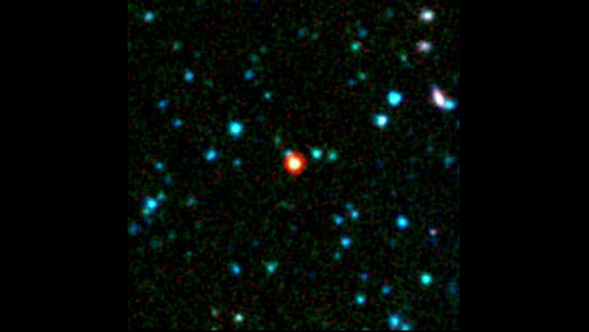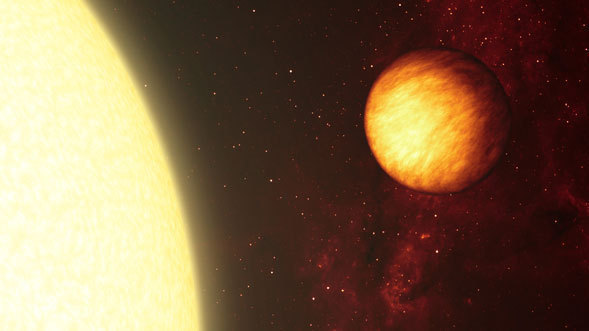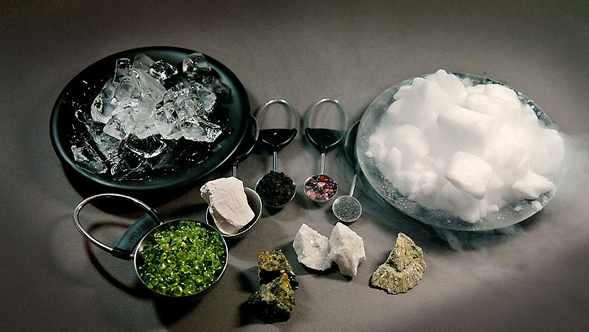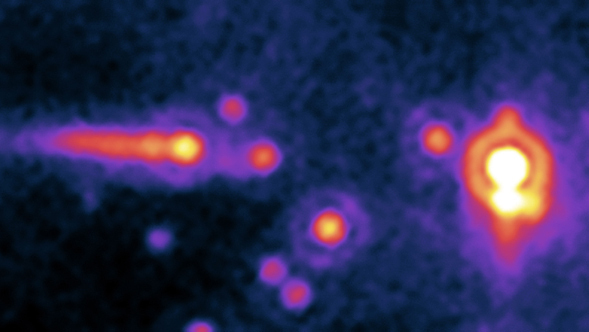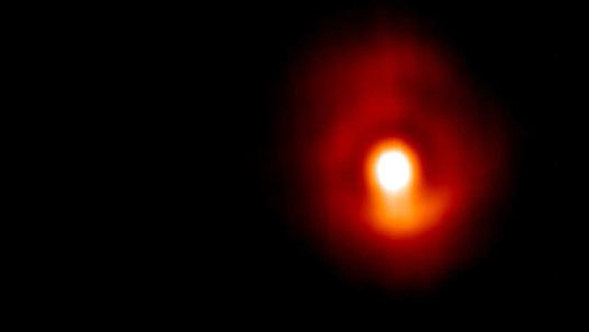Displaying news 421 - 450 of 587 in total
The Seven Sisters, also known as the Pleiades, seem to float on a bed of feathers in a new infrared image from NASA's Spitzer Space Telescope. Clouds of dust sweep around the stars, swaddling them in a cushiony veil.
A team of NASA scientists led by a member of the Spitzer Science Center believe they have found a way to predict the color of plants on planets in other solar systems.
Using a quartet of space observatories, University of Maryland astronomers may have cracked a 45-year mystery surrounding two ghostly spiral arms in the galaxy M106.
The double sunset that Luke Skywalker gazed upon in the film Star Wars might not be a fantasy.
For the last two years, astronomers have suspected that a nearby white dwarf star called GD 362 was "snacking" on a shredded asteroid. Now, an analysis of chemical "crumbs" in the star's atmosphere conducted by NASA's Spitzer Space Telescope has confirmed this suspicion.
The Chandra X-ray Center
University of California, Berkeley
European Space Agency
NASA's Spitzer Space Telescope has captured for the first time enough light from planets outside our solar system, known as exoplanets, to identify molecules in their atmospheres. The landmark achievement is a significant step toward being able to detect possible life on rocky exoplanets and comes years before astronomers had anticipated.
A bunch of rowdy comets are colliding and kicking up dust around a dead star, according to new observations from NASA's Spitzer Space Telescope. The dead star lies at the center of the much-photographed Helix nebula, a shimmering cloud of gas with an eerie resemblance to a giant eye.
University of Washington
University of California, Berkeley
The three iconic space pillars photographed by NASA's Hubble Space Telescope in 1995 might have met their demise, according to new evidence from NASA's Spitzer Space Telescope.
Gas-giant planets like Jupiter and Saturn form soon after their stars do, according to new research.
New observations from NASA's Spitzer Space Telescope strongly suggest that infrared light detected in a prior study originated from clumps of the very first objects of the Universe. The recent data indicate this patchy light is splattered across the entire sky and comes from clusters of bright, monstrous objects more than 13 billion light-years away.
Have supermassive black holes changed since the dawn of our Universe nearly 14 billion years ago?
NASA's Great Observatories -- Spitzer, Hubble, and Chandra -- are working together to unlock the mysterious structure of a supernova remnant in a nearby galaxy.
A new image from NASA's Spitzer and Hubble Space Telescopes looks more like an abstract painting than a cosmic snapshot. The masterpiece shows the Orion nebula in an explosion of infrared, ultraviolet, and visible-light colors.
Something scary appears to be slithering across the plane of our Milky Way galaxy in this new Halloween image from NASA's Spitzer Space Telescope. The snake-like object is actually the core of a thick, sooty cloud large enough to swallow dozens of solar systems. In fact, astronomers say its "belly" may be harboring beastly stars in the process of forming.
Astronomers using NASA's infrared Spitzer Space Telescope have discovered that an exploded star, named Cassiopeia A, blew up in a somewhat orderly fashion, retaining much of its original onion-like layering.
Carnegie Institution of Washington
Astronomers using NASA's Spitzer Space Telescope have recently identified two quasars, or supermassive black holes, that may be on the verge of a colossal cosmic "belch."
Mark your calendars for The Art of Astronomy, a three-day public event celebrating the collaboration of astronomy and art in Pasadena, California. The event will feature a spectacular slide show of cosmic images, lectures from world-renowned space artists, and a public unveiling of a magnificent new image from NASA's Spitzer and Hubble Space Telescopes.
Harvard-Smithsonian Center for Astrophysics
NASA's Spitzer Space Telescope has made the first measurements of the day and night temperatures of a planet outside our solar system. The infrared observatory revealed that the Jupiter-like gas giant planet circling very close to its sun is always as hot as fire on one side, and potentially as cold as ice on the other.
Could all of the asteroids, comets, and planets in our Milky Way galaxy be made of a similar mix of dusty components?
A star must live in a relatively tranquil cosmic neighborhood to foster planet formation, say astronomers using NASA's Spitzer Space Telescope.
For a brief moment in 2002, an obscure star called V838 Monocerotis (nicknamed V838 Mon by astronomers) suddenly became 600,000 times brighter than our Sun and temporarily was the brightest star in our Milky Way galaxy. Within a few months, it faded back into obscurity.
Two extremely rare cosmic objects have recently been detected in a shallow survey conducted with NASA's Spitzer Space Telescope. One is a quasar (or supermassive black hole) located approximately 12.5 billion light-years away. It is so bright that it outshines its entire galaxy. The other is a cold, puny "failed star" called a T-type brown dwarf.
A spectacular new infrared image and spectrum from NASA's Spitzer Space Telescope reveals the complex life cycle of young stars, from their dust-shrouded beginnings to their stellar debuts. Observations of this star-forming cloud were taken shortly after Spitzer returned to normal observations following a spacecraft anomaly. The image, which was captured by the telescope's Infrared Array Camera (IRAC), is the most sensitive infrared survey of the cloud to date.
Displaying news 421 - 450 of 587 in total
